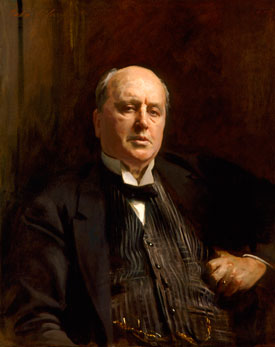7.16.25 — Society High and Low
She has “the look of experience.” Henry James was writing about a savvy society columnist, but he could just have well have meant the man who painted her, John Singer Sargent in Paris. Each competes for the inside track onto society, high and low.
 Now the Met tracks the years guaranteeing him a place in both, through August 3. It shows him still in his twenties but no less sophisticated and already a fixture in demand.
Now the Met tracks the years guaranteeing him a place in both, through August 3. It shows him still in his twenties but no less sophisticated and already a fixture in demand.
It was, James wrote, “a masterly rendering,” but you may remember a very different artistry. Emma Allouard-Jouan, a close friend of Sargent’s, is “slightly faded and eminently sensitive and distinguished.” Who knew that those terms all go together, and who associates them with so flashy a painter? Or does his surface flash always comport with something more? Only her face with its deeply shaded eyes emerges out of the darkness. She looks not so much worn as sober, with a working woman’s clothes, a journalist’s keen eye, and the elusive setting for a life.
Sargent arrived in Paris at just eighteen, in 1874, and you may think you know the story of an American in Paris well. Raw talent learns from his European betters, generous in their encouragement and unforgiving in their criticism. Sargent had particular luck in a mentor, the self-styled Carolus-Duran, who insisted on the study of Diego Velázquez. It taught Sargent minimal underpaint, near photorealism in charcoal, and commitment to portraits in the company of artists, writers, gentlemen, and kings. A less talented student would have floundered in the face of so many irreconcilable demands. Instead, it kept his mind open to the fitful pursuit of modern art.
Sargent could never quite embrace Impressionism or a newer art. He was born too soon and to all the right people, and he never did fit my tidy story. Raised in Florence to American parents, he came to Paris a seasoned traveler. Even so, he could hardly stay put. The curators, led by Stephanie L. Herdrich, take him to northern and southern France, Naples and Capri, Morocco, Boston, and beyond. His languid male models may leave one as uncertain about his longings in another way as well.
But then there are more than enough versions of John Singer Sargent to go around. If those versions include classical technique, racy female and child portraits, and fashion, all the better for him. It has given him New York shows of charcoals, caricatures, the artist’s creative circle, landscapes, and the influence of Spain—all within the time of this Web site. Excuse me if I largely leave you to past reviews for more. This artist who would try anything once and comport with anyone. And then he kept looking.
There is no explaining sheer talent, and good art should have you thinking about something else—just what he was doing. The son of a surgeon who chose to remain abroad, he had that rare combination of intellect, feeling, questioning, and detachment. A room at the Met for half a dozen contemporary artists helps, too, by focusing on differences. If you want a true Edwardian reformer, try James McNeill Whistler, but if you want the shock of the new, try Edouard Manet. If you want a science of vision guiding seemingly free brushwork, try Claude Monet. If you want a close copy after Velázquez, Sargent can supply one, but he will be sure that you see it as a quick copy.
He did not ask for outrage at his near strapless portrait of Madame X, but he got it, and it drove him to leave Paris for one last move, to London. It should make you think again, too, about the flash. Fashion for Sargent opens onto psychological depths otherwise unseen. A commanding red robe somehow pops out from an equally red curtain, because people here are only partly in command. A brother and sister share everything but their degree of confidence and uncertainty, while four sisters move through a room of vases as tall and as seemingly human as they. But then what is it to be sophisticated, apart from money, and what is it to be human?
Read more, now in a feature-length article on this site.